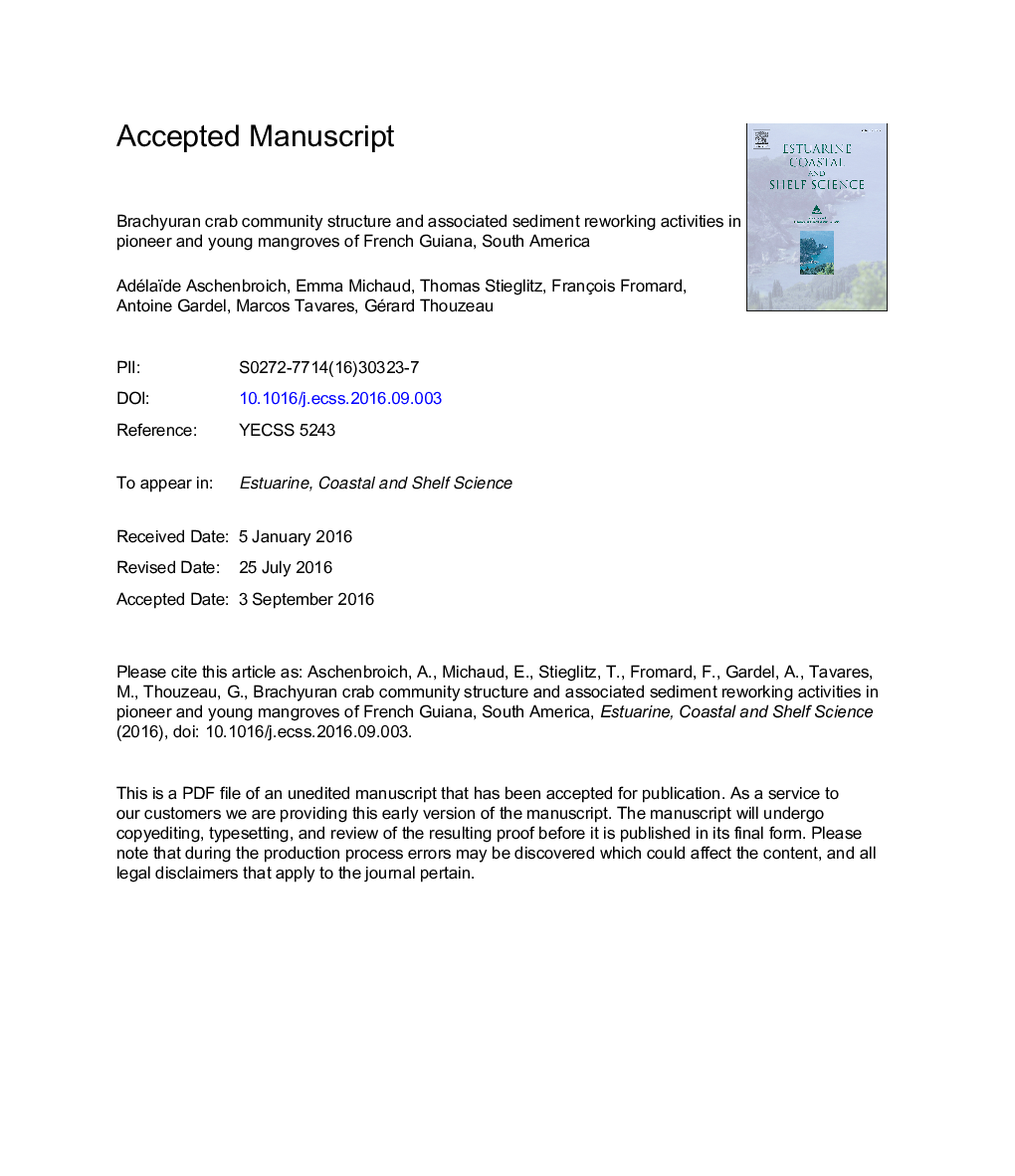| Article ID | Journal | Published Year | Pages | File Type |
|---|---|---|---|---|
| 6384450 | Estuarine, Coastal and Shelf Science | 2016 | 44 Pages |
Abstract
This study in French Guiana evaluates the changes of crab assemblages and their bioturbation activities between mangrove early stages (pioneer and young mangrove) and within stages by taking their spatial heterogeneity (tidal channels, flat areas, pools) into account. The results show differences in crab assemblage structure between and within the early stages of mangrove in relation to microhabitat and sediment characteristics. The sediment reworking rates are a function of the biomass or density of particular species (Ucides cordatus, Uca cumulanta) and burrower functional groups. Crab species or functional interactions mediate changes in sediment reworking rates suggesting the need to consider entire benthic communities rather than single species. This study suggests that the role of the microhabitat in determining the biologically-induced sediment reworking rates depends on the age of the mangrove. Feeding activity results in a sediment turnover of 11.7 ± 9.7 gdw mâ2 dayâ1 and 6.8 ± 3.0 gdw mâ2 dayâ1 in the pioneer and young mangroves, respectively. Burrow maintenance excavates 40.5 ± 7.4 gdw mâ2 dayâ1 and 251.3 ± 419.7 gdw mâ2 dayâ1 in the pioneer and young mangroves, respectively. Upscaling to the studied area (Sinnamary estuary: 6 km2), shows that 500 tons.dayâ1 and 20 tons.dayâ1 of sediments could be excavated and pelletized, respectively, during the spring tides of the dry season. Thus, biological sediment reworking would greatly contribute to the sedimentary dynamics of the Guianese mangroves under Amazonian influence.
Related Topics
Physical Sciences and Engineering
Earth and Planetary Sciences
Geology
Authors
Adélaïde Aschenbroich, Emma Michaud, Thomas Stieglitz, François Fromard, Antoine Gardel, Marcos Tavares, Gérard Thouzeau,
